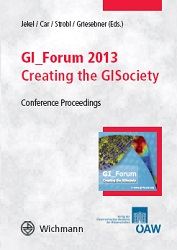
GI_Forum 2013, Volume 1, pp. 229-238, 2013/06/20
Creating the GISociety – Conference Proceedings

Nowadays, the amount of physical activity undertaken by children of school age is decreasing. This is a major concern, as it is linked with growing levels of obesity. This puts children at risk of a number of subsequent health conditions, particularly diabetes. This paper analyses the influence of the school environment on children`s physical activity. The travel mode to school and the distance each student travels to school are taken into account. The analysis draws upon a study carried out in a large number of schools in the Republic of Ireland (ROI) over the course of 3 years, the Children`s Sport Participation and Physical Activity (CSPPA) Study. By combining the spatial distribution of the students` homes and information about the school environment, it was possible to analyse on walking and cycling time by calculating service areas. The results of the analysis illustrate that the distance has an influence on physical activity because students living within 2.4 km of the school are more likely to walk to school than students living further away. The analysis also explored the impact of negative environmental factors.